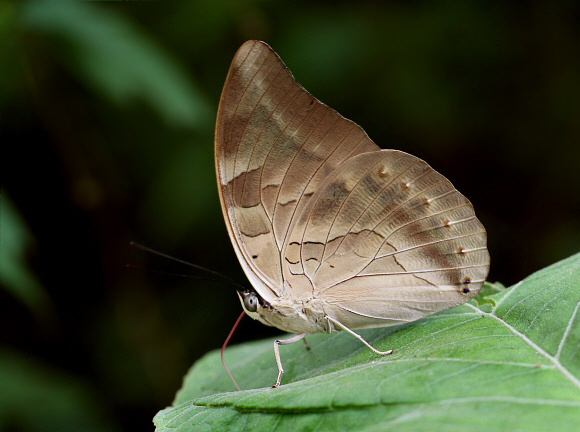 Archaeoprepona demophon, Medellin, Colombia – Adrian Hoskins
Archaeoprepona demophon, Medellin, Colombia – Adrian Hoskins
Introduction
The Charaxinae are a group of robust, medium to large Nymphalids characterised by having a rapid and powerful flight, stout bodies, and a habit of feeding at dung and carrion. They are represented in Africa by Charaxes, Palla and Euxanthe, in the Oriental and Australian regions by Charaxes and Polyura; and in the neotropics by genera including Consul, Memphis, Fountainea, Agrias, Prepona, and Archaeoprepona. There are 7 species in Prepona and 8 in Archaeoprepona.
Archaeoprepona and Prepona are very similar above, being dark brown with dazzling turquoise or blue bands. They can be distinguished by examining the underside hindwings. In Archaeoprepona there is a tiny submarginal ocellus in each cell, but in Prepona the ocellus near the apex, and the one near the tornus, are both greatly enlarged. Another difference is that Prepona males have tufts of yellow androconial scales on the hind-wings whereas in Archaeoprepona these are black.
In 1814 H�bner committed a faux pas by giving a newly described species the name demophoon, almost identical to the name demophon already used by Linnaeus for another species 56 years earlier in 1758.
Archaeoprepona demophoon is distributed from Mexico to Bolivia.
Habitats
This species is found in forested habitats at elevations between about 500-1500m.
Lifecycle
To be completed.
Adult behaviour
Males perch on tree trunks or on foliage, sitting facing head-downwards and with wings half open. They take part in impressive aerial sorties, chasing each other in broad circles around the tree tops. After each sortie they each return to their original perch.
Both sexes commonly feed at sap runs, rotting fruit, and less commonly at urine, dung or carrion. They descend from the tree tops in a series of steps, pausing for a few minutes at various points on the tree trunk or on foliage.
